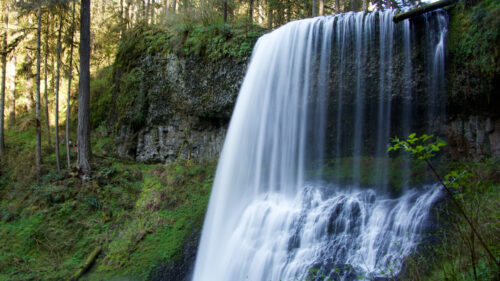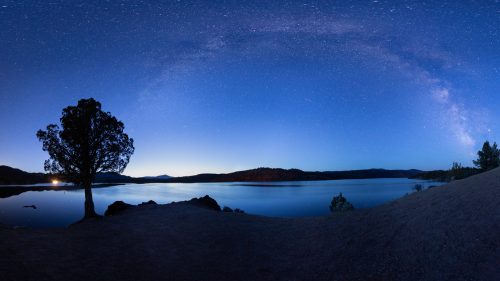For the past 45 minutes, I’ve been following Leo Rosen-Fischer on a 1.75-mile-long hike along a path in Silver Falls State Park near Salem. At 9,000 acres, this is Oregon’s largest state park, a magnificent preserve of thundering waterfalls, meandering trails and a stunning Ewok forest bristling with some of Oregon’s oldest and largest trees.
The trees are the reason I’m here.
Rosen-Fischer is the guide and owner of Tree Climbing at Silver Falls, a company with a name that says it all. Rosen-Fischer has pointed out huckleberries and salmonberries growing along the Buck Mountain Loop Trail, and has explained how old-growth forests like the one we’re passing through help prevent catastrophic wildfires.
But this isn’t just a walk in the woods. Soon Rosen-Fischer ducks off the trail and heads to the base of a 400-year-old Douglas fir that soars dizzyingly up from the ferny forest floor. He calls this one “Giant Secluded Tree.” Ropes dangle to the ground from hundreds of feet up in the canopy. The enormity of it all is disorienting, like I’m standing next to a planet.
“Time to climb,” he says, and up we go.
How to Climb an Old-Growth Tree
Rosen-Fischer is one of the few — if not only — commercial guides in Oregon who specializes entirely in recreational tree climbing, and he’s the only such operator in the park. All year long you can do guided half-day tours, sunset tours and even multiday classes inside the park, weather permitting.
Rosen-Fischer’s most thrilling option is also his newest. Today we plan to climb 280 feet into the upper reaches of Giant Secluded Tree, string hammocks between the branches and spend the night comfortably immersed in a world that most park visitors — most humans — have never seen.
Technical tree climbing is nothing like what you did as a kid — the first branches on these giants can be 10 stories up — and so you must ascend and descend ropes that Rosen-Fischer and his team of six guides first install using drones. All trips begin at the Howard Creek Trailhead, where you first practice using the equipment you’ll need and that the company provides.
That includes a climbing harness and two metal devices called ascenders that attach to the harness via separate high-strength tethers. The ascenders latch onto a single rope. Each ascender can slide upward freely but will not budge when weighted. One ascender has foot loops to stand in. By using the two ascenders together — one for standing, one for sitting — you can inch your way up the rope, one squat at a time. Nothing harms the tree; nothing pierces it.
To make climbing possible for more visitors, Rosen-Fischer has a motorized ascender to help climbers with disabilities or anyone who needs assistance to rise into this airy world. “You press a button and up you go,” he says. The oldest climber he’s ever guided was 98; the youngest was 8, the minimum age allowed. “I mean it when I say pretty much anyone can do this,” he says.
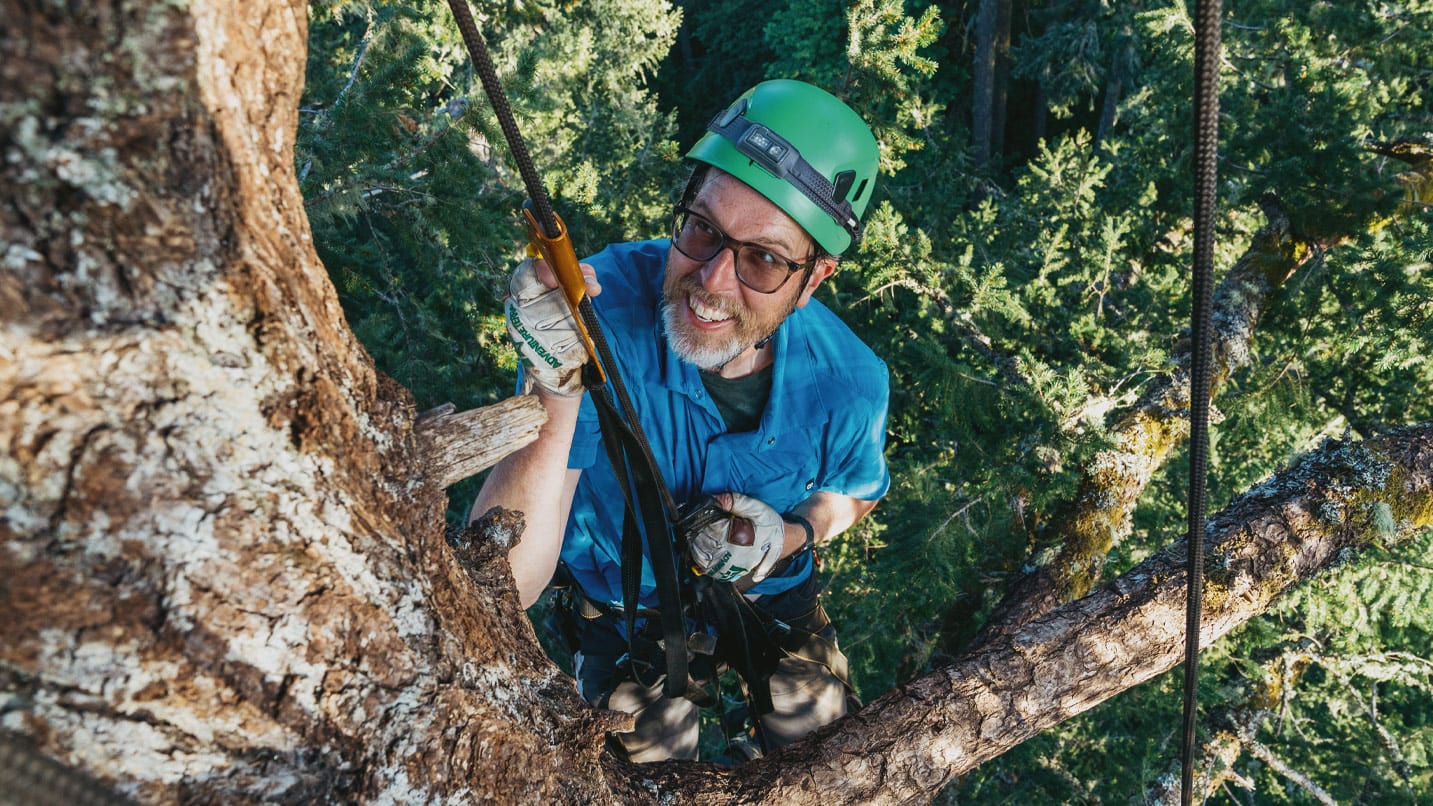
The Wildest Place You Will Ever Sleep
I attach a backpack with my sleeping gear, warm clothes and extra food and water to the foot loops with a carabiner, which adds some challenge to lifting my legs to set up each squat. Even so, Rosen-Fischer and I climb side by side surprisingly fast. I take frequent breaks to catch my breath and swim in the exposure of being so high off the ground. I trust the equipment but the reality of being somewhere so foreign still causes my heart to race.
This changes entirely once I hit the first branches, which are higher than the fully grown maple trees next door. The extreme exposure vanishes in the canopy. My heart rate settles, and I cruise the rest of the way up.
“Welcome to Tree Hotel!” Rosen-Fischer says. He helps me string up my hammock between branches on one side of the trunk. He hangs his hammock up on the other. I make a joke about room service.
I settle into my hammock, attaching a third, long tether from my harness to a rope anchored around the tree that frees me to remove the ascenders and get comfortable. The view is unlike anything, a 360-degree panorama that includes the fuzzy bottomlands of the Willamette Valley, the purple silhouettes of the Coast Range and the icy Cascades. Mist from the park’s waterfalls hangs over a distant valley.
Rosen-Fischer makes dinner using a Jetboil stove suspended from a branch to heat water that we pour into pouches of dehydrated beef stroganoff — a welcome dinner from Albany, Oregon-based Mountain House. We eat while dangling in a tree, watching the sunset, marveling at how we’re higher than the birds.
“The rest of the world is missing out,” Rosen-Fischer says. By 10 p.m. I’m asleep in a bath of moonlight.
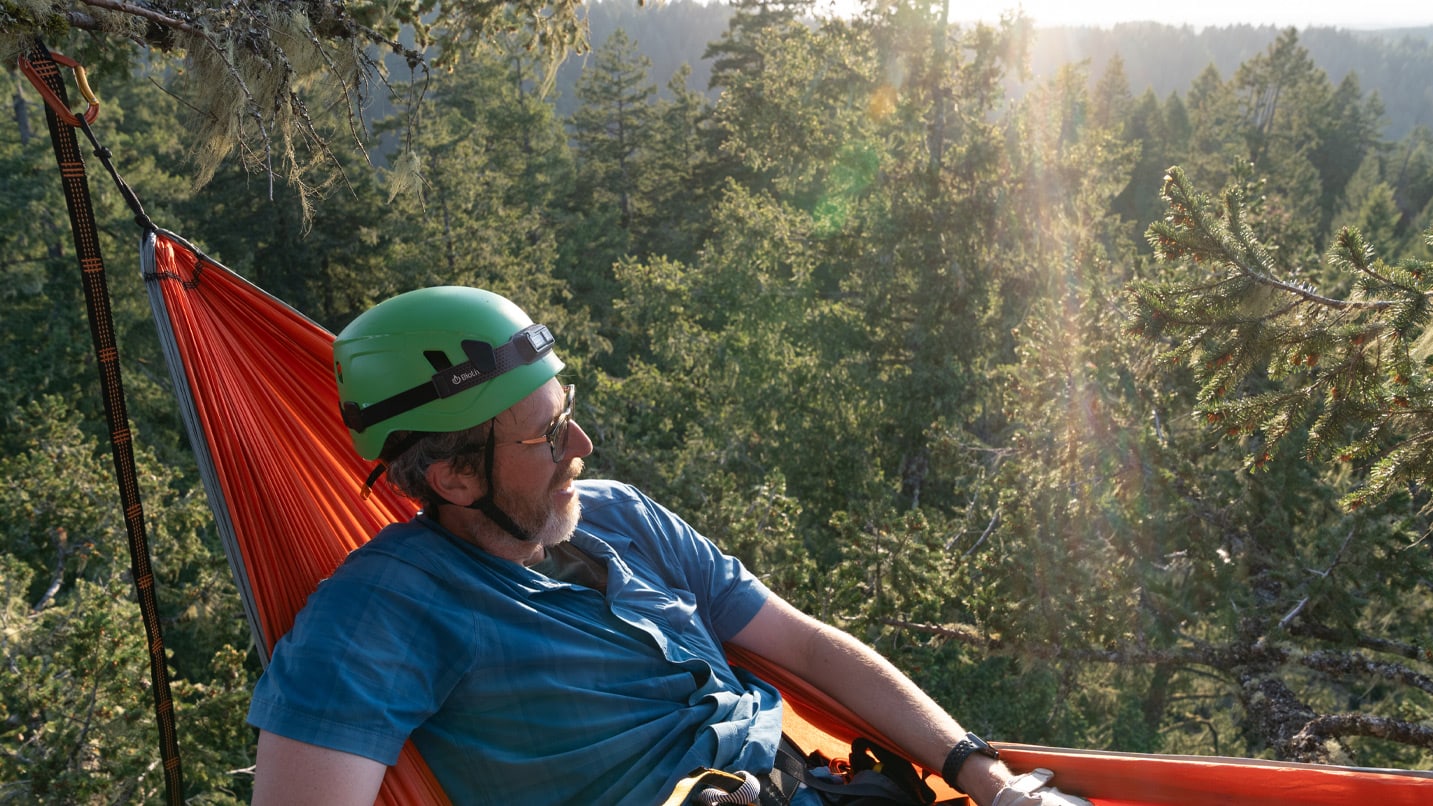
Hanging With the Birds
I had thought sleeping in my harness might be uncomfortable, but I hardly notice it. At some point in the thick of night, I startle awake when an owl swoops in and hoots from what feels like inches from my face. I’m not sure which of us is more surprised to find the other.
Morning comes bright and still, but I’m in no rush to go. Instead, Rosen-Fischer and I linger in our hammocks, watching the sun peek over the Cascades. A mountain chickadee flutters to a rest on a branch above me, clearly confused about the intruder. Rosen-Fischer serves a breakfast of granola. I ask about coffee.
“No coffee,” he says. “That tends to make people need the facilities.”
These are nonexistent in the tree, of course. He did haul up a special “duty” bucket that no one has ever needed, he says. Most folks just hold it.
The way down goes by in a blur with a rappelling device that allows me to make a controlled descent back to earth. I gasp when I pop out of the canopy and realize once again just how high we are. By 8 a.m. we’re back on the trail, the warblers and wrens singing us home. I can’t help but wish I were back up there with them.
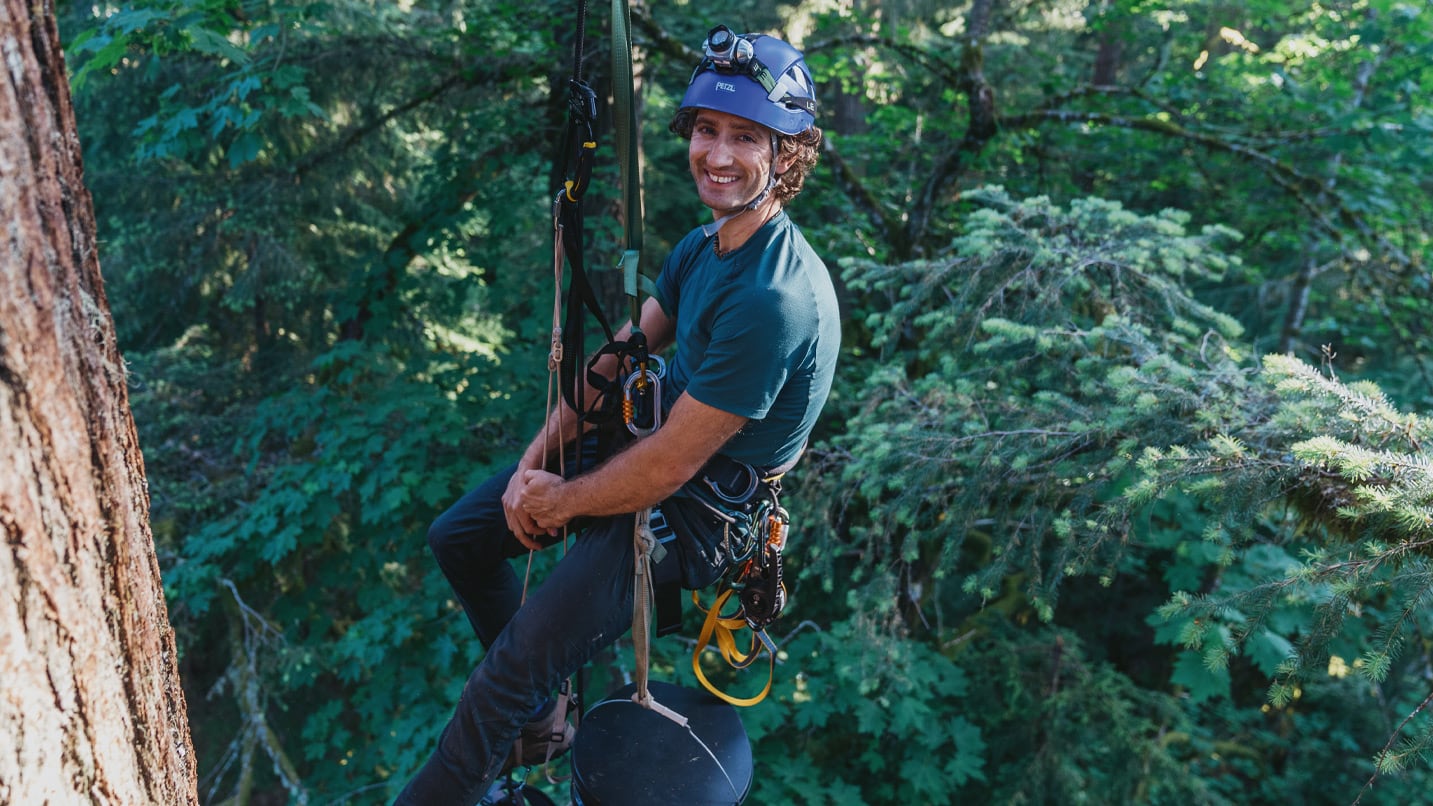
Places to Eat and Stay
Not ready to sleep in a tree? Silver Falls State Park has about 100 campsites, some with RV hookups, as well as 14 cabins, all reservable online. The Big Leaf Coffeehouse & Grill inside the park will satisfy your hunger with breakfast pastries, burgers and salads.
More Forest Adventures to Try
If you’d like to tackle a tree elsewhere in Oregon, check out Portland’s Expedition Old Growth and Oregon’s City’s Tree Climbing Planet, both of which arrange guided climbs, often on private land. For more guided forest escapes — perhaps with a bit less climbing — Temenos Rising offers guided nature walks in Yachats and Portland that include forest bathing, the Japanese-inspired practice that combines elements of meditation and mindfulness to foster a deeper connection to nature. WildCraft Studio School offers spring and fall mushroom-foraging workshops in the Columbia River Gorge and other areas, where you’ll learn how to identify, sustainably harvest and prepare mushrooms like chanterelles, lobsters and king boletes.
For a self-guided hike into rich stands of old-growth Douglas firs, try the 3.2-mile-long Swamp Peak Trail, which leads into the Middle Santiam Wilderness Area of the Willamette National Forest.
